Many lovers of beautiful home plants over time become eager to have an orchid. This is really an amazing inhabitant of the tropics, which will decorate the apartment. True, the orchid is quite whimsical. Even relatively small mistakes in cultivation can lead to the most unpleasant consequences. Therefore, every florist - beginner and experienced - should know how to plant an orchid in a pot so as not to harm it.
When should an orchid be transplanted
There are several signs that an experienced florist will instantly understand that you will have to get your hands dirty when transplanting. For example, the question of how to transplant an orchid into another pot is worth asking if a persistent smell of rotting, dampness and mold spreads from the plant - this is a very alarming signal. If the work is not done on time, then the orchid may well die.
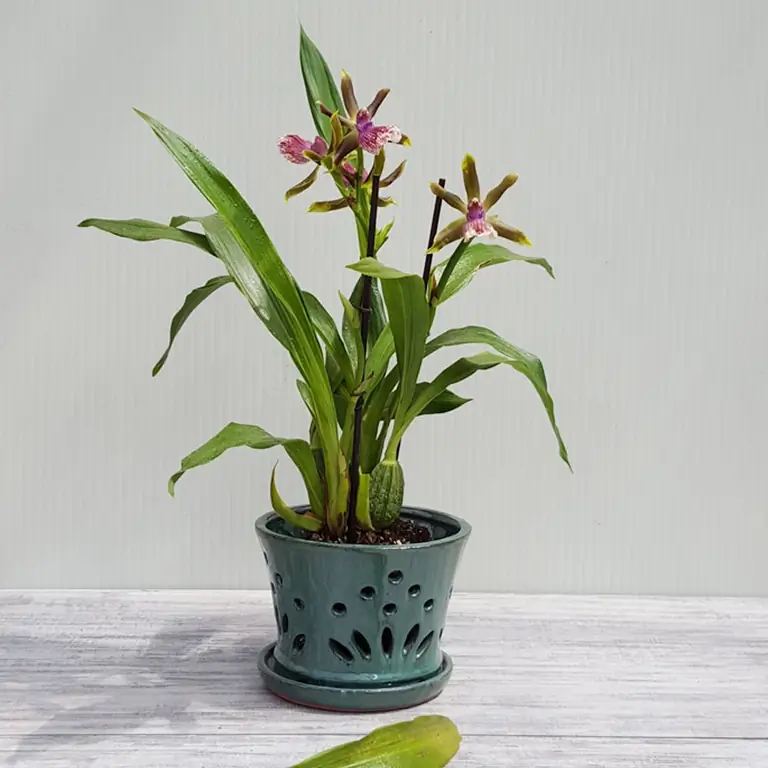
Also a bad sign is a compressed substrate. Watch the soil level in the pot - if it is crumpled and settled a few centimeters, then the root system is in danger. At the same time, the appearance of the orchid changes - it takes on a withered appearance, indicating that something is clearly wrong with it. Finally, you need to follow the roots. It is no coincidence that you can often see special transparent pots for orchids on sale - we will talk about them a little later. Roots are he althy if they remain green. But gray or brown is a very alarming sign. If you notice this, be sure to transplant the orchid.
Which pot to use?
Now move on to the next question to learn about how to plant an orchid in a pot. Namely, the choice of the pot itself.
Of course, the easiest option is a plastic pot with special holes for drainage - removal of excess moisture. This is really very important - how to water an orchid in a pot without holes? After all, water will accumulate and this will inevitably lead to rotting of the roots, and hence the death of the plant. Still, excess moisture accumulates at the bottom and you need to let it flow freely.

Special glass pots are also on sale. On the one hand, a very good option - attractive and allowing you to monitor the condition of the roots (when growing orchids, this is really important). On the other hand, there is an opinion among plant lovers that the sun's rays are refracted by glass, which can cause burns to the roots. And a random blow that will easily break the glass into dozens of sharp fragments cannot be canceled.
That is why transparent orchid pots are very popular,made from plastic. They retain all the advantages of glass, but at the same time they are not so much afraid of blows, they refract sunlight less. Some even have special holes not only in the bottom, but also in the walls to speed up the removal of excess moisture. They will be the best choice for growing orchids.
Better soil
Another important issue to understand in order to understand how to plant an orchid in a pot is the selection of suitable soil.
Orchid, although a tropical plant, does not like high humidity too much. Therefore, the substrate must absorb relatively little moisture. Some florists even fill the pot with styrofoam, a lightweight, non-absorbent material. But it does not look too elegant, especially if you grow an orchid in a transparent pot.
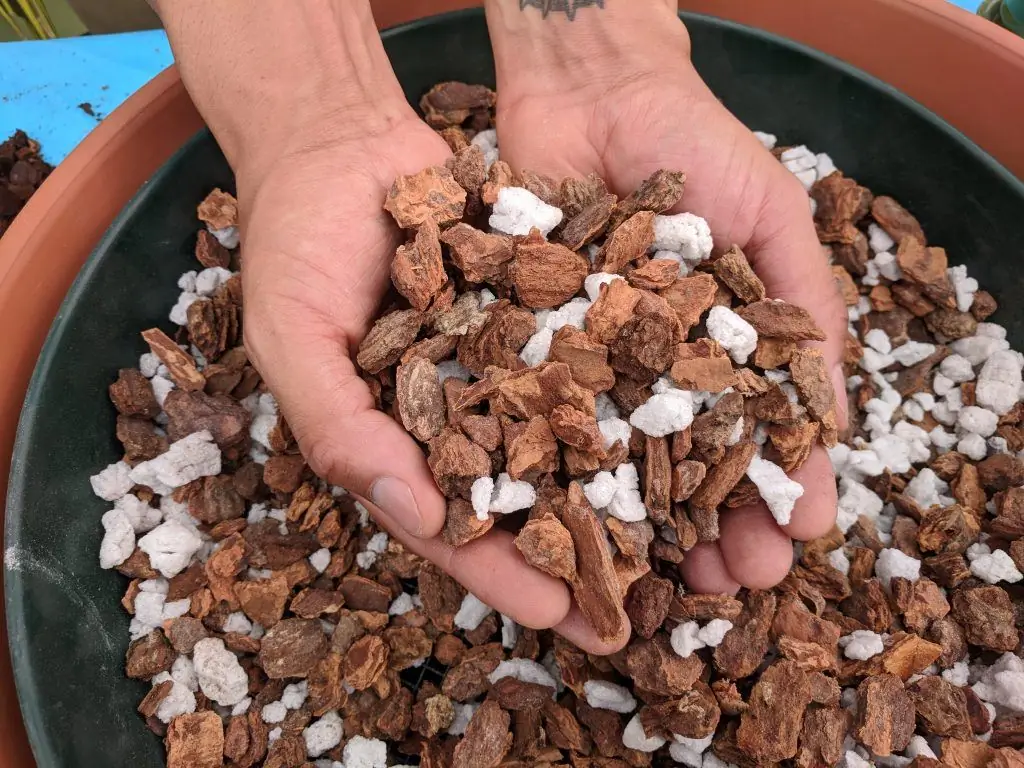
Special orchid substrate is sold in stores, but according to some connoisseurs, it is not the best choice. It is quite another thing - filling, created by one's own hands.
This will require activated charcoal, sphagnum moss and tree bark. Problems with the search for source materials will definitely not arise. Charcoal is sold in pharmacies, but you can also take firebrands from a fire - the main thing is that it be clean wood, free from plastic and other waste that is often burned at the stake. Sphagnum moss can be collected in the forest or purchased at a store that sells everything you need for plants. Finally, the bark can easily be taken in any forest. Pine is best. It can be taken from fallen treesor live, the main thing is not to take too much so as not to harm the plants. It is advisable to boil the bark for 10-15 minutes - this will destroy the parasites and their eggs, then dry it thoroughly and grind it into small pieces. Then it is mixed with moss and coal in a ratio of 5:1:1. The ideal substrate for the orchid is ready!
It is undesirable to use compost, peat and other popular types of substrates. They allow many other plants to grow well, but they are completely unsuitable for orchids.
Preparing a new place for the orchid
Now everything needs to be done to make the new place a really good choice for growing a beautiful plant. Which pot is better to choose for an orchid has already been described above, as well as about the soil.
Now take your chosen container and about one third or even half fill with drainage. Natural materials that do not absorb moisture at all, such as run-in, smooth pebbles, are best suited.
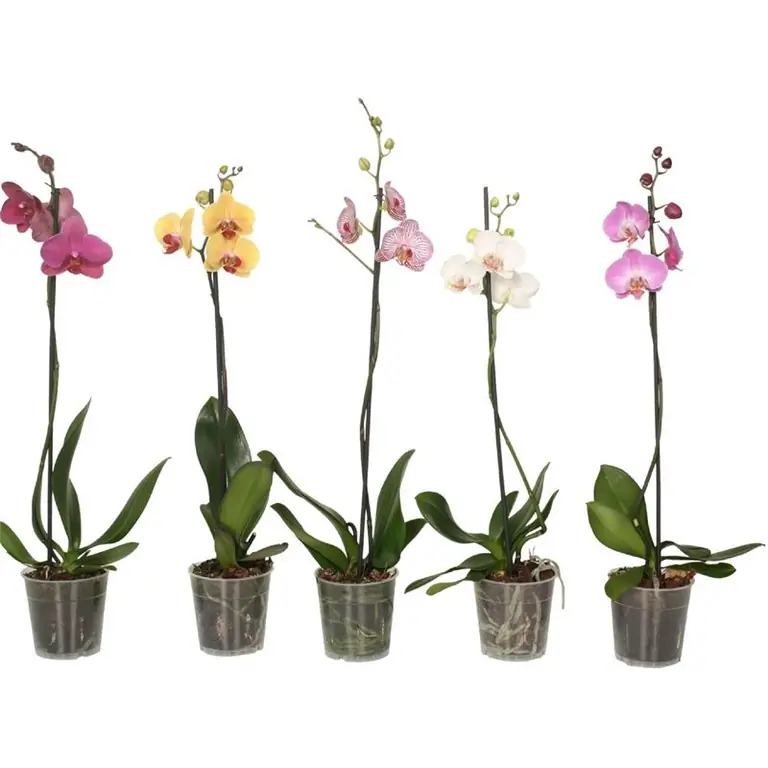
From above, the drainage is covered with prepared substrate - approximately a layer of 3-5 centimeters, so that there is still quite a lot of space left to the edges of the pot, at least 7-10 centimeters.
Preparing for transplant
To know how to properly transplant an orchid into a new pot, you need to understand the intricacies of preparing for this important operation.
First of all, you should remember - three to four days before the transplant, and preferably a week, you need to stop watering. Unless the house is too hot - in this case it is advisable to rearrange the pot inshaded place where it is not so hot. Experienced florists recommend repotting orchids when their roots are slightly dry on the outside (but never dry!). When the substrate in the pot is completely dry, move on to the next step and try to figure out how to transplant the orchid into another pot.
Replanting the plant correctly
First you need to carefully remove the plant from the pot. Often this has to be done along with the ground. Take a long, flat object (such as a kitchen butter knife) and carefully peel the soil away from the sides of the pot, loosening it a bit to make it more crumbly. If the earth is dry enough, then there will be no problems here. Then, lifting the ground from different sides with the same knife, carefully remove the orchid from the pot. It must be done with surgical care so as not to damage the roots.
Now you need to thoroughly rinse the root system - for example, use cool water from the shower. This will cause a lot of problems for other plants, but orchids tolerate such washing without harm to themselves. Carefully place it on a paper towel and inspect the roots. They must be green. Pay special attention to brown and gray. Carefully feel them along their entire length - there is a high probability that they have already died and are completely unnecessary. In this case, carefully cut them with sharp scissors or secateurs. It is desirable to process the cut - crushed activated carbon is suitable.
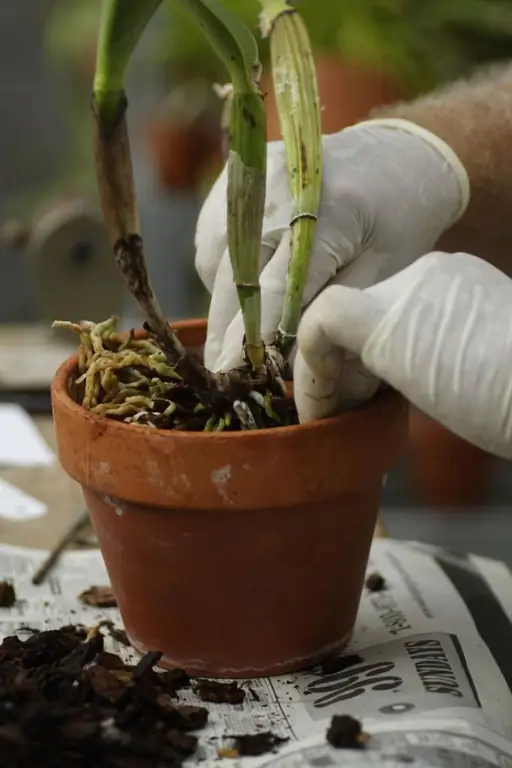
Now carefully spread the roots so that they look in different directions, and set the plant in a new pot. Add the rest of the substrate - as a result, they should not reach the edges by about 2-3 centimeters. Lightly tamp the soil with your hand. At the same time, remember that only the roots themselves should be buried. The base of the plant does not need to be buried - on the contrary, it should be slightly raised above ground level.
The main work is finished! But do not think that you have finally figured out how to plant an orchid in a pot. There are additional nuances that you definitely need to know about.
Strengthening the orchid
Unlike many other ornamental plants, the orchid does not have thin root processes that would quickly develop and fix it in the ground. Therefore, you need to help her in this matter. Indeed, even advances of a few millimeters will inevitably lead to the fact that the orchid will temporarily stop growing. This is especially noticeable in cases where sensitive tips are damaged due to movement.
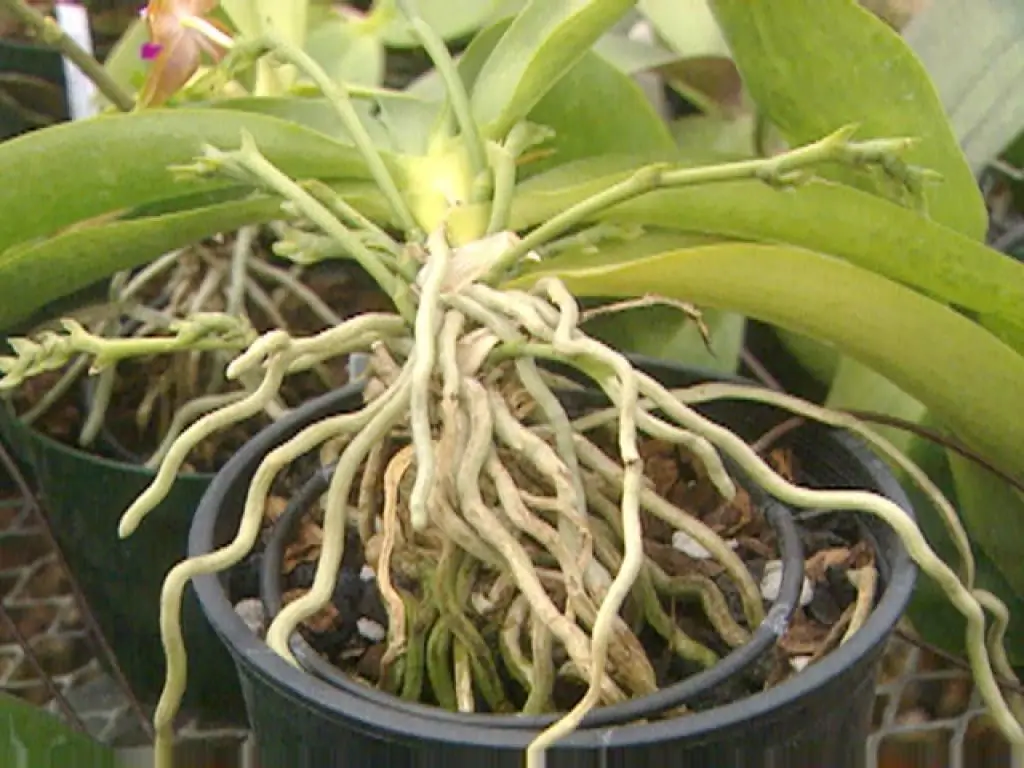
There are many ways to cope with the task. For example, in stores there are special fasteners in the form of thin wire. It is fixed on the pot, after which it fixes the plant.
You can also stick into the ground (carefully without damaging the roots) a long, strong stick (like those sent with rolls and sushi) and tie an orchid to it.
Some flower lovers wrap the plant with nylon tights several times, securing them relative to the pot. Yes, not very pretty. But this is a temporary measure - after a few weeks, the tights can be safely removed, since the orchid will already be fixed inpotted.
Post transplant care
Any florist who knows how to care for a purchased orchid in a pot will also need to know what care it needs immediately after transplantation.
First of all, it is recommended to stop watering. It is advisable not to water the orchid for 5-10 days, and in some cases even two weeks. Roots develop rather slowly and excess moisture will do more harm than good. The main thing is to make sure that the plant feels normal - if the leaves begin to fade, the substrate must be moistened. Of course, all this time the pot should be in a well-lit, but at the same time cool place. The plant must be protected from direct sunlight so that it does not dry out.
At the same time, it is advisable to spray the leaves with a spray bottle. It will also be nice to humidify the air around the plant. This will have a positive impact on growth rates.
When watering for the first time, experts recommend dissolving a little Fitosporin in water.
When will it bloom?
Growing homemade orchids in a pot, florists appreciate them for their beautiful flowers. Of course, they are interested in how long after transplanting the plant will begin to bloom.
In fact, orchid transplants are easier to tolerate than most houseplants. Therefore, if everything was done correctly, then it will bloom at the right time. An exception may be cases where the transplant was carried out shortly before the buds bloom. At the same time, the orchid will probably throw off the buds so as not to waste excess moisture and nutrients on the flowers.
Can I plant two orchids in one pot?
Of course, a blooming orchid in a pot looks great. But some florists go further and plant two or even three plants in one pot, creating a really great picture.
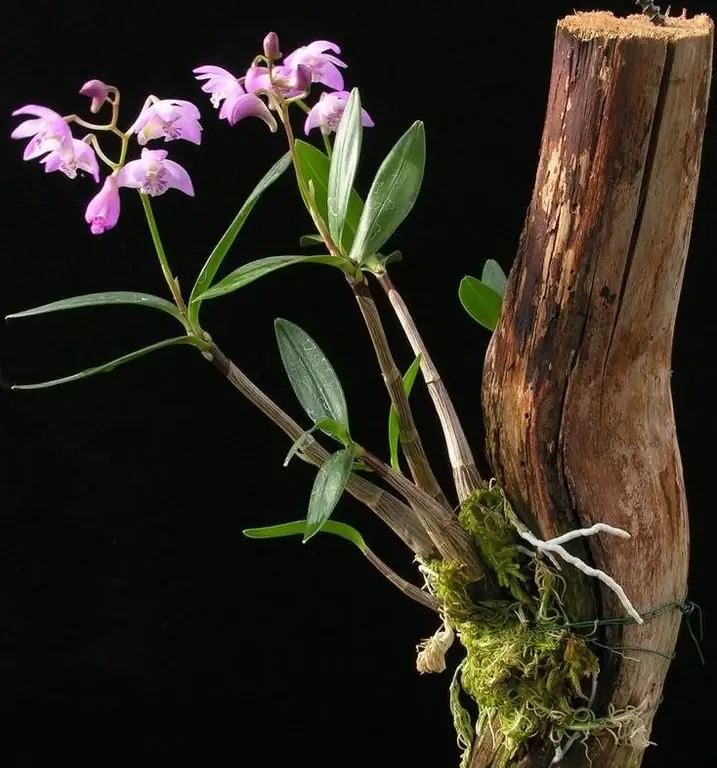
However, experts recommend not to do this. In a small pot, two orchids will be cramped. And in large ones, they do not take root well - the roots grow rather slowly and it will take a long time before the orchids bloom. In addition, there is another threat here - with the active development of root systems, they will certainly be strongly intertwined. As a result, it can be very difficult to separate them during transplantation - the roots will have to be cut, which will deal a blow to the he alth of the plants, and may even lead to their death.
Conclusion
This concludes our article. Now you know how to properly transplant an orchid into a new pot. So, you can easily cope with this task, and home plants will feel just great.






